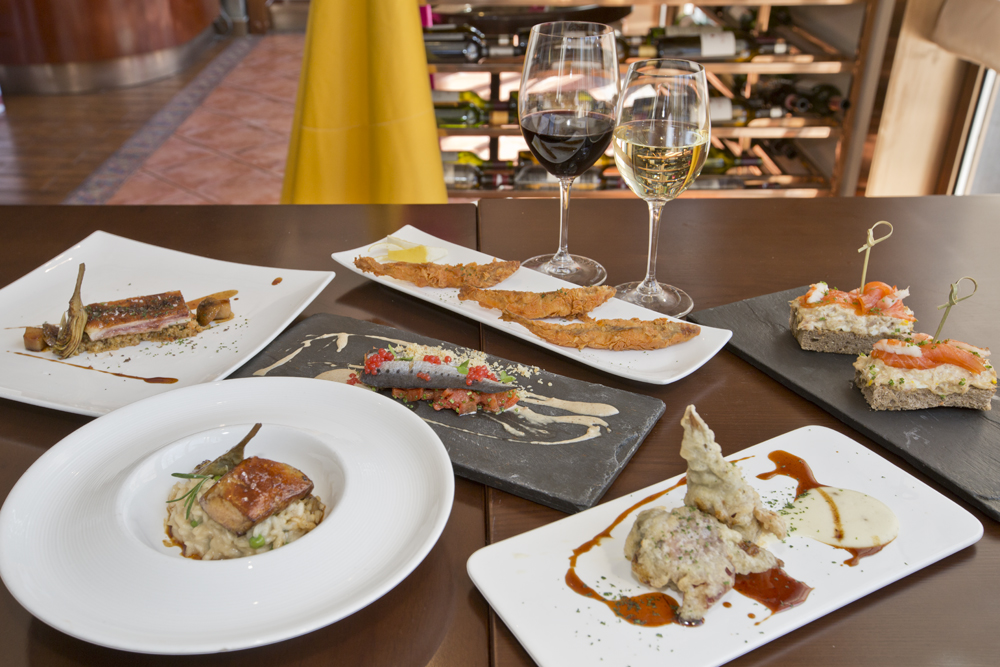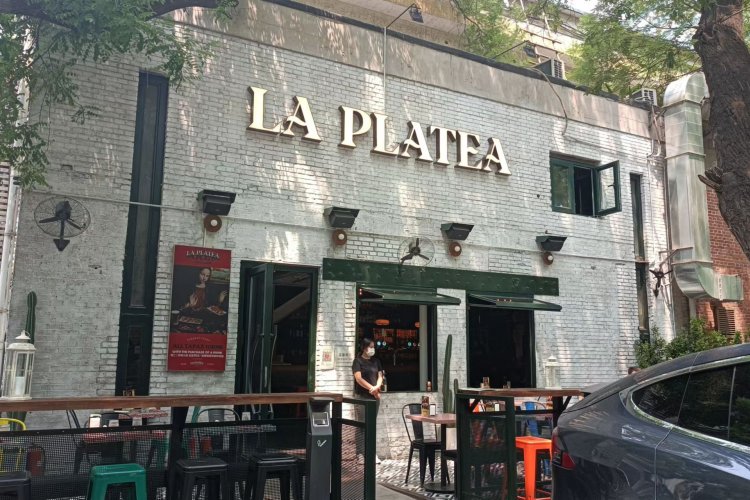Tantalizing Tapas: Five Puerta 20 Dishes You Must Try
 This post is sponsored by Puerta 20, a world-class Spanish restaurant located in the Worker’s Stadium complex.
This post is sponsored by Puerta 20, a world-class Spanish restaurant located in the Worker’s Stadium complex.
Maiker Valdivia cut his teeth as a chef in San Sebastian, where he also fondly recalls whiling away the evening hours with friends drinking wine and nibbling on savory tapas in the Spanish city’s many bars and cafés. Nowadays as Head Chef at Puerta 20, the Chilean native is still in love with tapas and is sharing his passion for these iconic Iberian delectables with his Beijing customers.
If you’re eager try Chef Valdivia’s mouthwatering creations, but don’t necessarily want an entire sit-down meal, you’re in for a treat: Puerta 20 will soon serve their tapas with a few select bars and cafés in the Sanlitun area.
Details are still being finalized and we will keep you posted, but in the meantime you can always swing by the restaurant at Gate 20 of the Workers’ Stadium to try a few of the Chef’s personal favorites:

Marinated Norwegian salmon with dill and lemon, served on brown bread with scallions capers and shrimps
Topped with slices of soft, juicy salmon, this dish is perfect for leisurely Sunday brunches and long summer nights alike. Despite its simple appearance, preparation is painstakingly complex – Chef Valdivia marinates the salmon in dill and herbs for two days, giving it a deliciously subtle bitter flavor. He then places the salmon atop a layer of shrimp and brings it all together on a bread base slathered in a creamy spread made from tuna, scallions, and mayonnaise.
“You’ll find this very traditional dish at bars and cafés everywhere in Spain,” explains Chef Valdivia. “It’s always made with some bread, with a cream or sauce on top along with bits of pork, chicken or fish and rounded off with egg whites or parsley.”

Marinated fried hake fish
To prepare this dish Chef Valdivia marinates these slender, slightly crispy little swimmers in vinegar, lemon, wine, paprika, black pepper, parsley, and bay leaves. As with the aforementioned salmon dish, the marinating process takes more than a full day to ensure that all of these complex flavors are fully soaked in. The fish is then fried until they are golden brown and ripe for the nibbling.
“These fish might look like sardines, but they are not,” the chef says, adding that sardines are usually blue in color “The fish we use is hake – it’s more like a little sea bass. I like this dish because it’s hard to find good quality hake here in China, which makes it more special.”

Salty Sardines with roasted cream, cogito tomatoes, and blood orange caviar
Sardines are the definitive star of this dish, which also features a surprising twist: The brightly-colored “caviar” on top may appear to be roe at first glance, but is actually made from blood oranges painstakingly shaped into little orbs. Chef Valdivia achieves this effect by mixing the blood-red fruit with water and gelatin, and then squeezing tiny drops of the mixture into a bowl of oil with a dropper. Because the water won’t mix with the oil, the ingredients instantly harden into little orbs that resemble caviar. The result is as appealing to the eyes as it is the tongue.

The orbs are sprinkled atop a layer of tomatoes and held in place by a tangy sauce made with roasted sardine bones, cream, gelatine, egg and sunflower oil. “This sauce is similar to mayonnaise, but has a distinctive sardine flavor from the roasted bone bits infused inside,” explains the Chef.
Because of its subtle flavor, Chef Valdivia does not recommend pairing this dish with a heavy red wine. “For sardines, you need a white wine. This is a very fresh, summery dish that’s quite light, so it’s good to drink it with a Marques de Riscal white wine. It’s a very dry, light wine, which is good here because you don’t want something too strong that will won’t let you taste the sardines.”

Creamy porcini mushrooms with artichokes and grilled foie gras
This dish’s hearty flavor comes from its creamy mushrooms, wine-cooked rice, and its sturdy serving of foie gras. Unlike the sardine dish, light, breezy white wines are not ideal for this porcini mushroom foie gras – the chef recommends a heavy red like the Ribera del Duero. “This wine has a lot of power, it works very well with this tapas’ stronger flavor.”

Stuffed artichokes with goat cheese wrapped in jamón
Artichokes are, perhaps, an acquired taste – many Chinese people are not accustomed to its subtly bitter flavor and distinct texture. But the artichokes used in this dish pack another flavorful surprise: Thanks to a compound called Cynarin, eating artichokes leaves a subtle aftertaste that makes every bite you take afterwards seem sweeter. “Try some wine after you take a bite and it will taste totally different,” explains Chef Valdivia, who recommends pairing a hearty red like the aforementioned Ribera del Duero with this dish.
But beyond the sweet surprise from the artichoke there is more to the flavors and texture of this dish, which is stuffed with the sharpness of creamy goat cheese and wrapped in Puerta 20’s salty and sweet A-grade Iberico jamón.
Photos: Uni You







